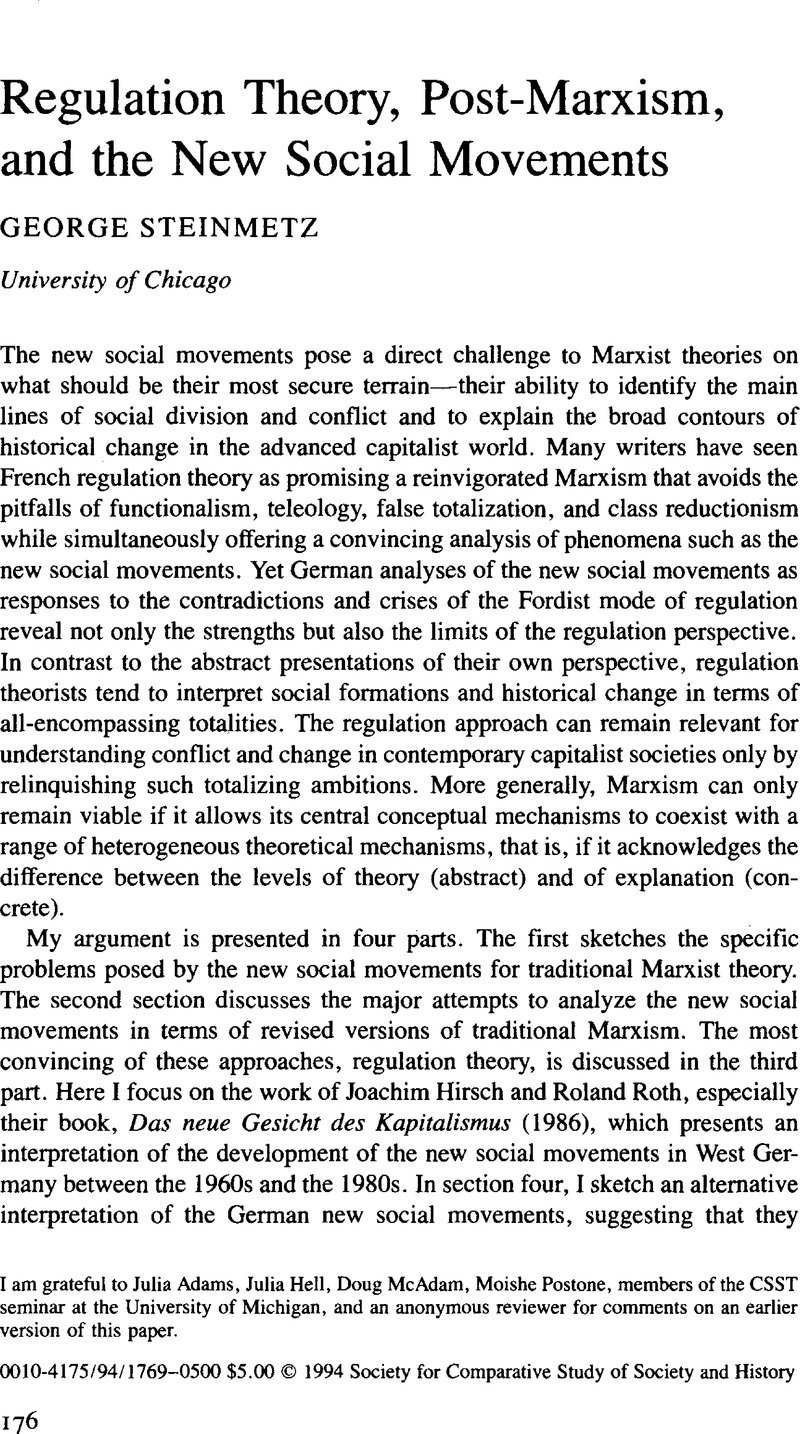Crossref Citations
This article has been cited by the following publications. This list is generated based on data provided by Crossref.
Buechler, Steven M.
1995.
New Social Movement Theories.
The Sociological Quarterly,
Vol. 36,
Issue. 3,
p.
441.
Munck, Gerardo L.
1995.
Actor Formation, Social Co-Ordination, and Political Strategy: Some Conceptual Problems in the Study of Social Movements.
Sociology,
Vol. 29,
Issue. 4,
p.
667.
Vincentnathan, S. George
1996.
Caste Politics, Violence, and the Panchayat in a South Indian Community.
Comparative Studies in Society and History,
Vol. 38,
Issue. 3,
p.
484.
Carroll, William K.
and
Ratner, R. S.
1996.
Master Framing and Cross-Movement Networking in Contemporary Social Movements.
The Sociological Quarterly,
Vol. 37,
Issue. 4,
p.
601.
Carroll, William K.
and
Ratner, Robert S.
1996.
Master Frames and Counter‐Hegemony: Political Sensibilities in Contemporary Social Movements*.
Canadian Review of Sociology/Revue canadienne de sociologie,
Vol. 33,
Issue. 4,
p.
407.
Jessop, Bob
1997.
Twenty years of the (Parisian) regulation approach: The paradox of success and failure at home and abroad.
New Political Economy,
Vol. 2,
Issue. 3,
p.
503.
Munck, Gerardo L.
1997.
Formação de Atores, Coordenação Social e Estratégia Política: Problemas Conceituais do Estudo dos Movimentos Sociais.
Dados,
Vol. 40,
Issue. 1,
p.
105.
Filion, P
1998.
Potential and Limitations of Community Economic Development: Individual Initiative and Collective Action in a Post-Fordist Context.
Environment and Planning A: Economy and Space,
Vol. 30,
Issue. 6,
p.
1101.
Jones, Martin
1998.
Restructuring the local state: economic governance or social regulation?.
Political Geography,
Vol. 17,
Issue. 8,
p.
959.
Wall, Derek
1999.
Mobilising earth first! In Britain.
Environmental Politics,
Vol. 8,
Issue. 1,
p.
81.
Mertig, Angela G.
and
Dunlap, Riley E.
2001.
Environmentalism, New Social Movements, and the New Class: A Cross‐National Investigation*.
Rural Sociology,
Vol. 66,
Issue. 1,
p.
113.
Martin, Greg
2001.
Social movements, welfare and social policy: a critical analysis.
Critical Social Policy,
Vol. 21,
Issue. 3,
p.
361.
Boggs, James P.
2002.
Anthropological Knowledge and Native American Cultural Practice in the Liberal Polity.
American Anthropologist,
Vol. 104,
Issue. 2,
p.
599.
Steinmetz, George
2003.
The State of Emergency and the Revival of American Imperialism: Toward an Authoritarian Post-Fordism.
Public Culture,
Vol. 15,
Issue. 2,
p.
323.
2005.
The Politics of Method in the Human Sciences.
p.
366.
2005.
The Politics of Method in the Human Sciences.
p.
393.
2005.
The Politics of Method in the Human Sciences.
p.
427.
2005.
The Politics of Method in the Human Sciences.
p.
233.
2005.
The Politics of Method in the Human Sciences.
p.
508.
2005.
The Politics of Method in the Human Sciences.
p.
59.



